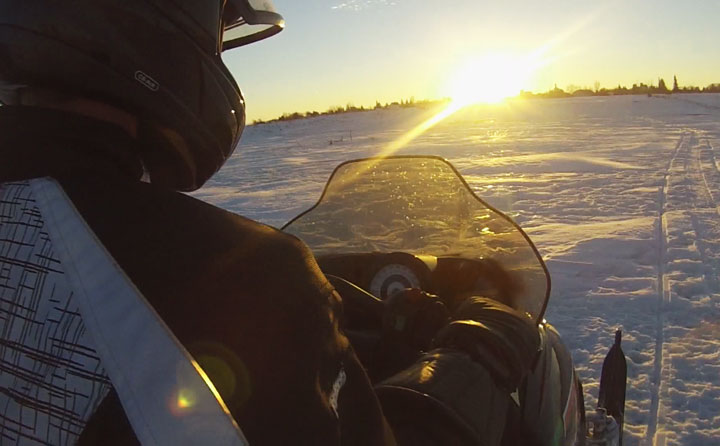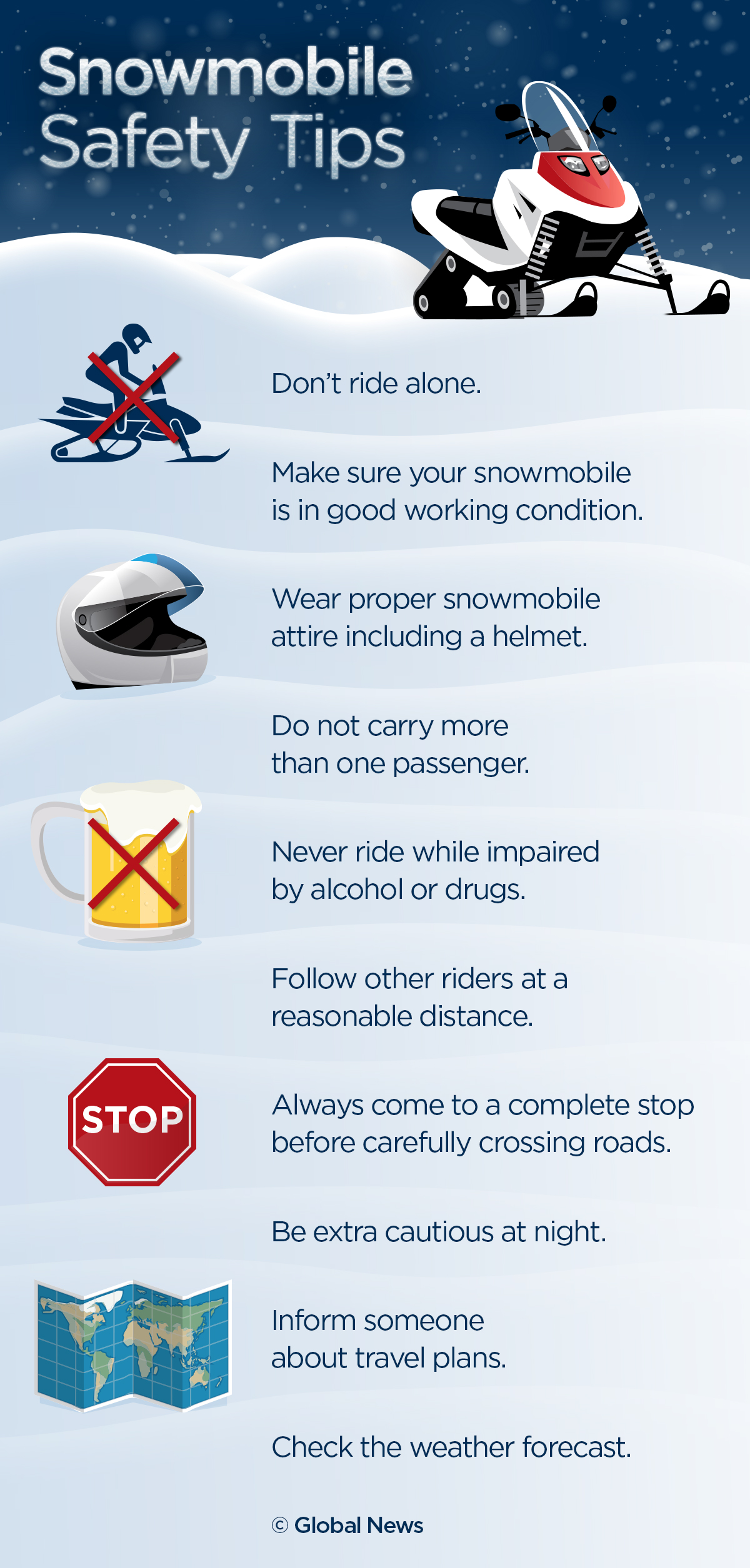SASKATOON – Whether riders are newcomers to the hobby or have been carving fresh tracks for years, there are a number of precautions snowmobilers can take to get home safely this winter. Snowmobiling can be a fun winter recreational activity but only if it’s safe too.

Chris Brewer has ridden across Canada from B.C. to Nova Scotia and says safety should always be priority number on the frozen landscape.
“We’re all beginners at the start of every season,” said Brewer, who is president and CEO of the Saskatchewan Snowmobile Association.
“It should be: get yourself refreshed in some safety, go over your snowmobile, go over your safety survival gear.”
In many snow-covered regions, snowmobiling is more than outdoor recreation and in some cases it’s the main method of transportation. But safety is universal according to Brewer.
“Its universal in Canada, would be never ride alone, let people know where you’re going to and when you’re going to return, always wear good clothing, take along a cellphone,” said Brewer.
“You never know, sometimes they are going to work, sometimes they aren’t, so just don’t make that your primary source but take a cellphone along.”
Saskatchewan Government Insurance (SGI) says risky behaviour, speed, alcohol and unfamiliarity with the terrain or the machine are major contributing factors for snowmobile deaths and injuries.
“Never drink and ride,” said Brewer.
“The leading cause of fatalities and accidents on snowmobiles is a combination of speed and alcohol and oftentimes the two are combined together.”
Riders should always remember to stay clear of lakes, ponds and dugouts early or late in the season. SGI advises riders that what may look like a smooth, hard lake surface could turn out to be open water covered with thin ice.
Thin ice is a major risk for snowmobilers being submerged in a hazardous situation, especially during times of freezing and thawing.
“The opportunity of survival is extremely low given you’re wearing boots, you’re wearing a snowmobile suit, you’ve got a helmet on, all of this stuff is going to absorb water and it’s just going to get heavier and heavier and we know the end result,” said Brewer.
“We just saw this in northern Saskatchewan, where (snowmobilers) ventured out on ice that had been formed and not allowed to get to a safe thickness and we see this early every season and people need to understand.”
READ MORE: Missing snowmobiler found underneath ice in northern Sask.
Brewer says it’s important to know when the ice is safe to carve up with tracks.
“It takes extremely cold temperatures and a lot of cool days and nights for good, safe ice to form,” said Chris Brewer.
“Snowmobile safe ice would be five inches and greater and I would even say six to eight inches and thicker just to be on the safe side.”
If riders are unsure of current conditions, a good indicator is to watch for ice fisherman.
“Get a little more educated, it’s as much as stopping at a local gas station or bait shop and asking some questions,” said Brewer.
SGI says take particular care to avoid any body of water where there may be movement underneath, such as where streams or springs enter lakes and narrow channels.
Emergency supplies are crucial in a situation where you can’t walk home in deep snow and have to overnight it.
“You can travel in one hour on a snowmobile, what you can’t walk in one day,” said Brewer.
“These new snowmobiles will take us to places that we’ve never ventured before.”
Snowmobilers should carry an emergency kit that includes: operator’s manual, tools, flashlight, waterproof matches, tow rope, compass, first aid kit, map, knife, flares, dehydrated food and a shovel.
READ MORE: New initiative aims to improve avalanche education amongst mountain snowmobilers
Brewer stresses that anyone snowmobiling in avalanche territory must have the right gear, they should know how to use it, be current on detailed reports/conditions and take a safety course.
Want your weather on the go? Download Global News’ Skytracker weather app for iPhone, iPad or Android.
Brewer says classes and online safety courses are available to old and young, man and woman.



Comments